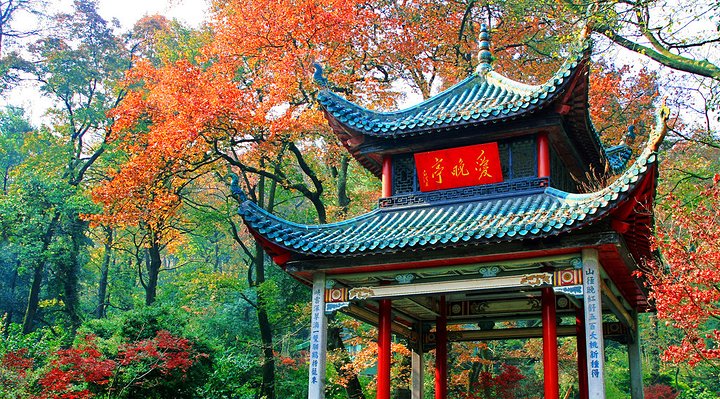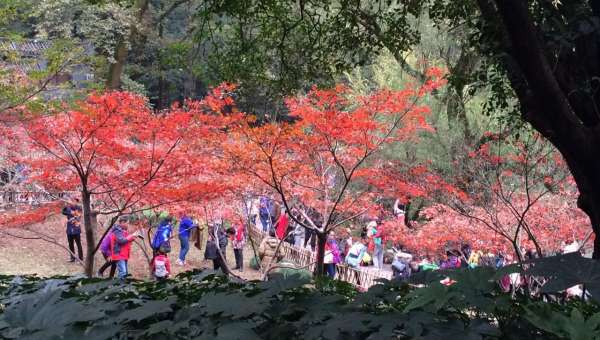Aiwan Pavilion was initially constructed in the 57th year of Emperor Qianlong's reign in the Qing Dynasty (1792) by Luo Dian, the president of Yuelu Academy. Alongside Zuiweng Pavilion in Chuxian County, Anhui Province (1046), Huxin Pavilion in West Lake, Hangzhou (1552), and Taoran Pavilion in Taoran Pavilion Park, Beijing (1695), it is renowned as one of China's Four Famous Pavilions.

Aiwan Pavilion at Dusk
Originally named Hongye Pavilion (Red Leaves Pavilion) and also known as Aifeng Pavilion (Love for Maple Pavilion), Aiwan Pavilion was later renamed by Bi Yuan, the Governor-General of Huguang, based on a poem by Du Mu.

Maple Leaves Surrounding Aiwan Pavilion
Over the years, Aiwan Pavilion has undergone numerous vicissitudes, with successive restorations during the Tongzhi, Guangxu, and Xuantong reigns of the Qing Dynasty. During the autumn of the third year of Xuantong's reign, when Mr. Cheng Songwan, the Superintendent of Education in Hunan, oversaw the restoration, he inscribed a couplet written by Luo Dian on the pavilion's pillars. This restoration of Aiwan Pavilion was also recorded on a stone tablet. Known to the world as the "Releasing the Crane" stone inscription or the "Two Nan Poems" inscription, these two poems are seven-rhyme verses composed by two renowned literati, Zhang Nanxuan of the Song Dynasty and Qian Nanyuan of the Qing Dynasty, during their visits to Yuelu Mountain. The stone inscription was later moved to a hexagonal thatched pavilion at the southern end of Qingfeng Bridge.
Before liberation, the pavilion lay in ruins, surrounded by desolation. After liberation, the Party and the government have carried out five restorations. In 1952, Hunan University undertook a major renovation, and President Li Da specifically requested Chairman Mao to inscribe the pavilion's name, "Aiwan Pavilion."
In 1969, Yuelu Mountain Park underwent another renovation, and Chairman Mao's cursive calligraphy of "Qinyuanchun ¡¤ Changsha" was engraved inside the coffered ceiling, adding further luster to the ancient pavilion. In international exchanges, Aiwan Pavilion's fame has also grown steadily.

